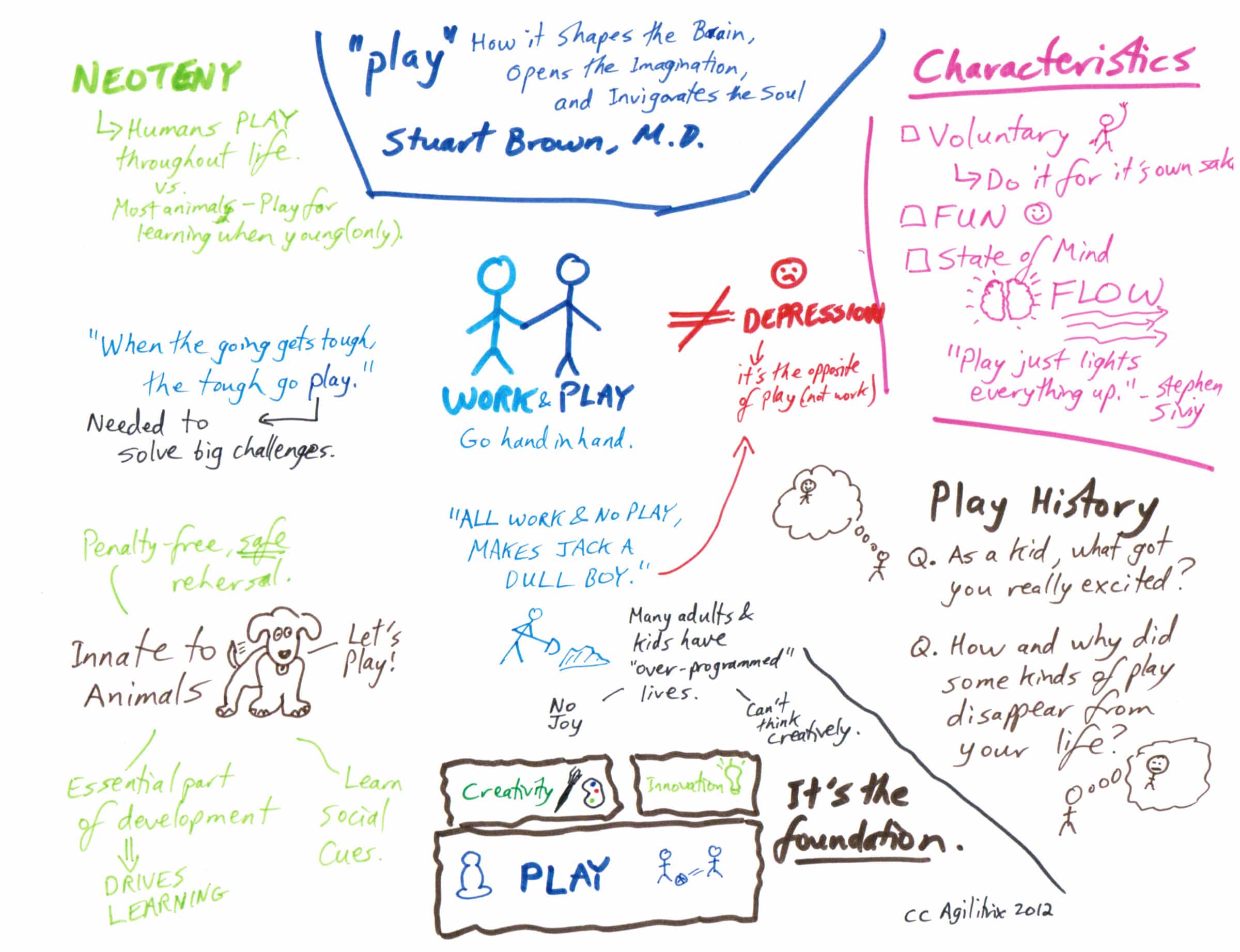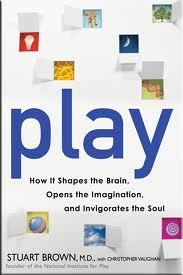Play is critical for creativity and innovation. It is something we cultivate in high-performance teams.
Stuart Brown literally wrote the book on it – Play: How it Shapes the Brain, Opens the Imagination, and invigorates the Soul. It is the tale of a medical doctor who could not ignore the importance of play in the lives of people and the tragedies that result from a lack of play.
Consider the visual note below that captures features of the book that helped me better understand the science of play.  The characteristics of play are that it is voluntary, fun, and results in a flow state of mind.
The characteristics of play are that it is voluntary, fun, and results in a flow state of mind.
Play is the foundation of Creativity and Innovation. Our ability to take risks and learn from mistakes are key to innovation. To do this we must be able to play in safety.
Play is innate to animals and humans. Brown shares the science around play being a driving force for learning. Animals (in particular, mammals) use play when young to develop cognitive and social skills. Humans are special in that they play through life. In part this allows us to continue to learn through life. Neoteny describes our trait of retaining youthful characteristics.
Perhaps the most important point is that Work and Play go hand in hand. Play is an enabler of work, not the opposite. The opposite of play is depression. “All work and no play makes Jack a dull boy.” And by dull, we mean unable to support the creativity needed to accomplish challenging tasks. “When the going gets tough, the tough go play.” And I know that I use StrategicPlay® with Lego® to solve really big challenges.
If you thinking about building up your play muscles, the place to start is with your play history: think about what got you really excited when you were a kid. There are questions in book if you want to explore further.
It’s no wonder, I am such a big fan of games for learning and doing work.
Curious to learn more? You can start with the TED talk below or pick up the book.



